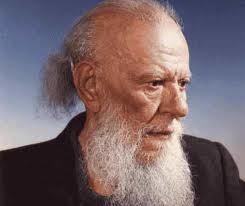AL-HALLAJ, MUSTAFA (1938-2002)
Born in Salame, Jaffa, in 1938; was also known as Sheikh Al-Fannanin (‘The Master of Artists’); after the 1948 Nakba, ended up with his family in Damascus; completed his higher studies in 1964; studied Sculpture at the College of Fine Arts in Cairo; attended the Luxor Atelier for Postgraduate Studies; his art included paintings, graphics, murals, illustrations, cover designs and etchings; specialized in graphic art and sculpture and was called by some critics “icon of contemporary Arab graphic arts;” lived in Beirut and Damascus; contributed to define fan al-muqawama (the art of resistance); lost 25,000 of his prints in the Israeli attacks on Beirut in 1982 but managed to save the wood and masonry cuts he used to make them; was a founding member of the trade union committee of the General Union of Palestinian Writers and Journalists, and a member of the Managing Committee of the General Union of Palestinian Abstract Artists in Syria; laid the foundation for an art gallery, which opened in the memory of Naji Ali in 1987 in Damascus; his famous Self-Portrait as God, the Devil, and Man was inspired by ancient Canaanite legends, folk tales, and Palestinian cultural icons, and is a sequence of pictorial narratives which had reached 114 meters at the time of his death, summarizing the history of the Palestinian people from 11th Century BC to the present; won several local and international awards and prizes; died in Dec. 2002 in Damascus, while trying to rescue his works from a fire that destroyed his studio; was buried in Al-Yarmouk Refugee Camp, Damascus.

ولد في سلامة في مدينة يافا عام 1938؛ عرف أيضاً بشيخ الفنانين؛ بعد النكبة الفلسطينية عام 1948، استقر مع عائلته في دمشق؛ أكمل دراساته العليا عام 1964؛ درس النحت في كلية الفنون الجميلة في القاهرة؛ درس في جامعة الأقصر للدراسات العليا the Luxor Atelier for Postgraduate Studies شمل فنه على الرسومات الزيتية، رسوم بيانية صور زيتية جدارية، توضيحات، تصميم أغلفة وكليشيهات؛ متخصص في الفن التخطيطي والنحت وسماه بعض النقاد ب “أيقونة الفنون التخطيطية العربية المعاصرة”؛ عاش في بيروت ودمشق؛ ساهم في تعريف فن المقاومة؛ خسر حوالي 25.000 من مطبوعاته في الاعتداءات الإسرائيلية على بيروت عام 1982، ولكنه تمكن من إنقاذ الخشب والمباني w ood and masonry cuts التي استعملها في صنعها؛ كان عضواً مؤسساً في لجنة نقابة الاتحاد العام للكتاب والصحافيين الفلسطينيين، وعضواً في اللجنة الإدارية للاتحاد العام للفنانين التجريديين الفلسطينيين في سوريا؛ وضع الأساس لصالة عرض فنية والتي افتتحت إحياءاً لذكرى ناجي علي عام 1987 في دمشق؛ استوحى عمله الفني الشهير التصوير الذاتي كالله، الشر، والرجل من النقوش الكنعانية القديمة، الحكايات الشعبية والأيقونات الثقافية الفلسطينية وسلسلة من القصص المصورة التي بلغت 114 متر في الوقت الذي توفي فيه، والذي يلخص تاريخ الشعب الفلسطيني من القرن الحادي عشر قبل الميلاد حتى الوقت الحاضر؛ حاز على العديد من الجوائز المحلية والعالمية؛ توفي في كانون الأول/ ديسمبر عام 2002 في دمشق بينما كان يحاول إنقاذ أعماله من حريق دمر الأستوديو الخاص به؛ دفن في مخيم يرموك للاجئين الفلسطينيين في دمشق.
